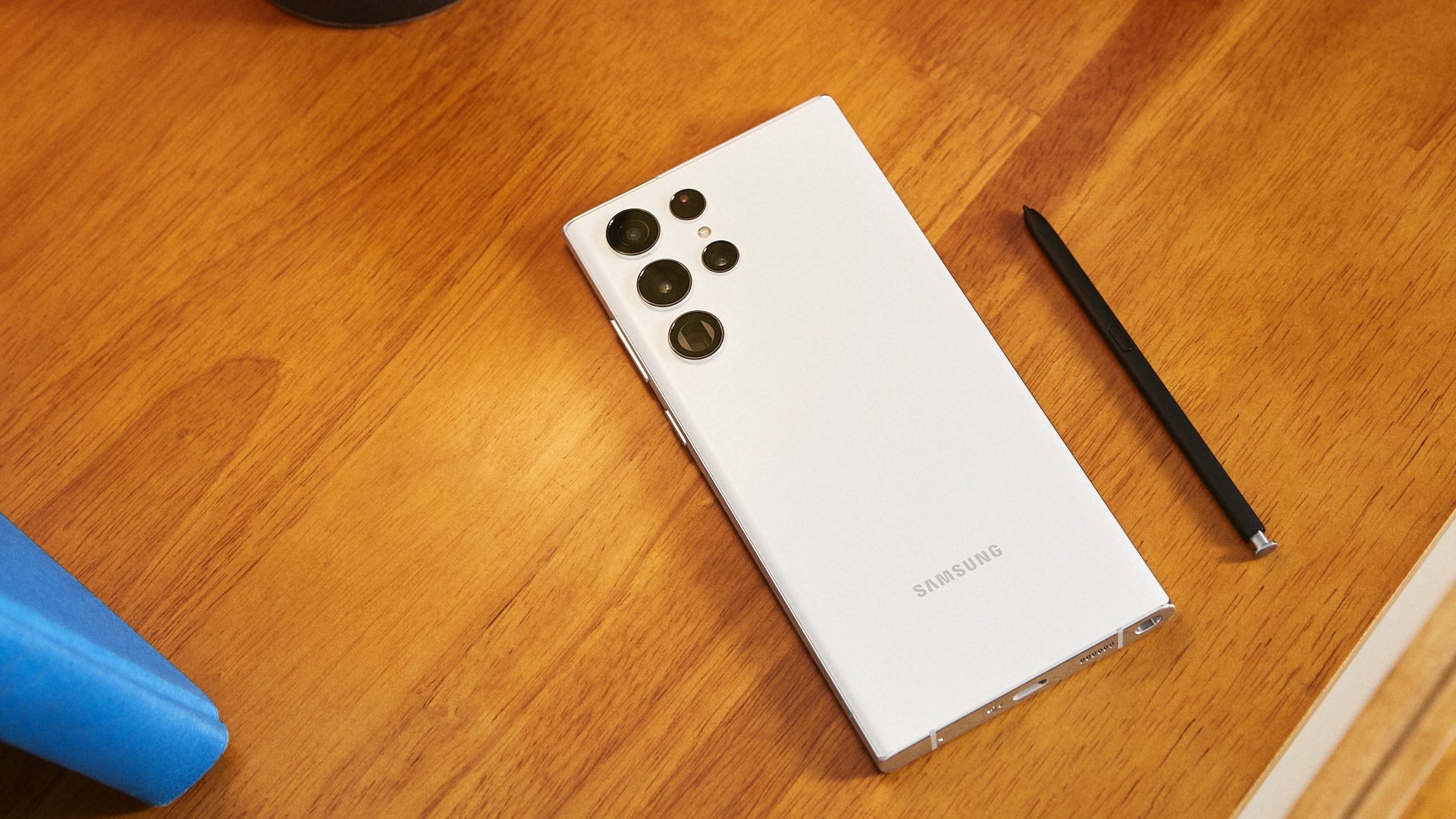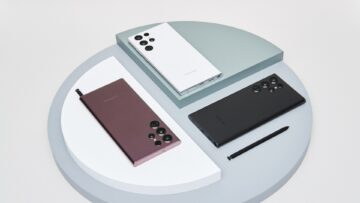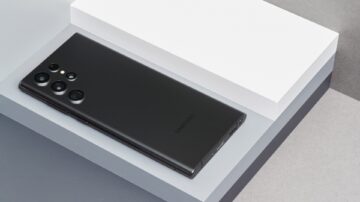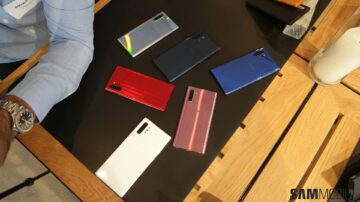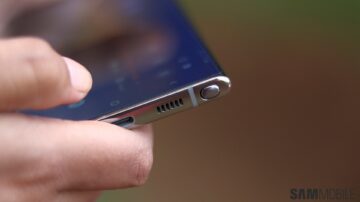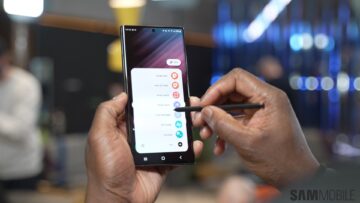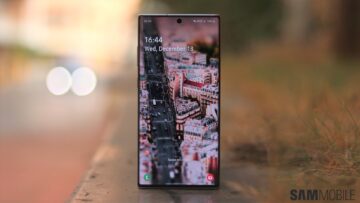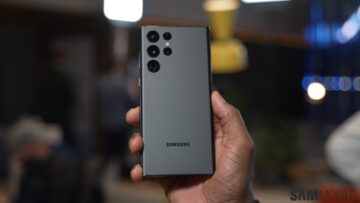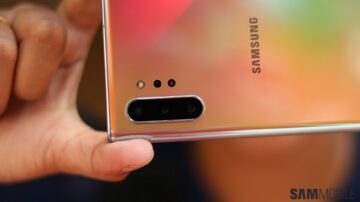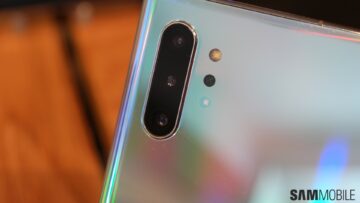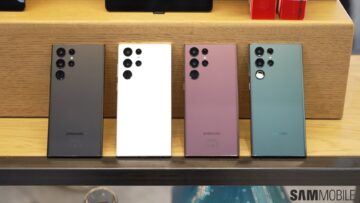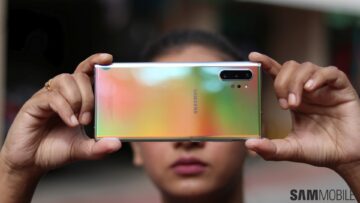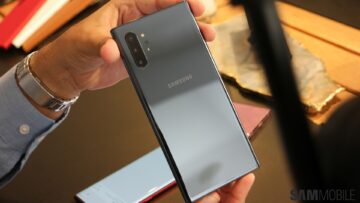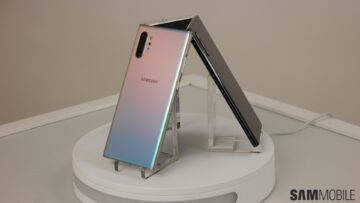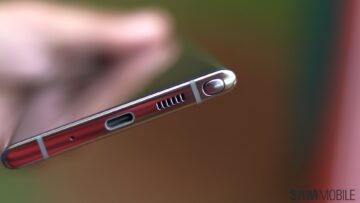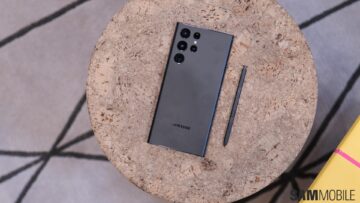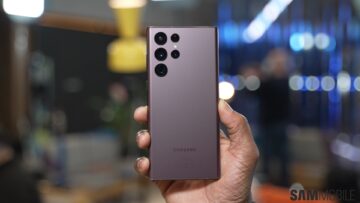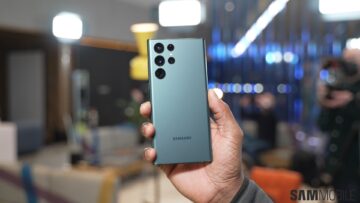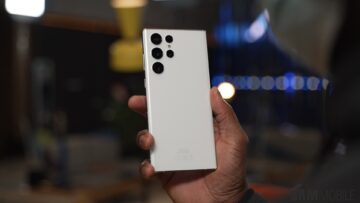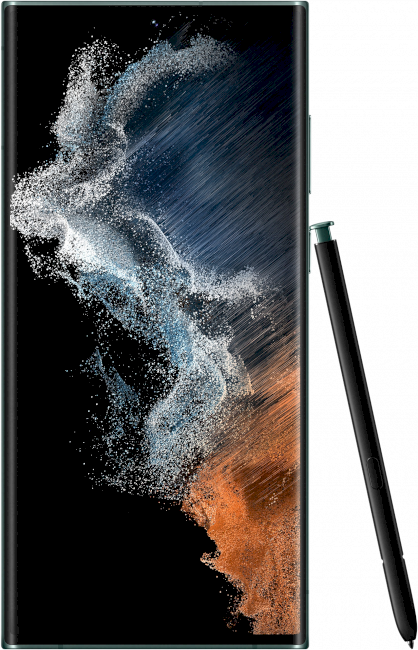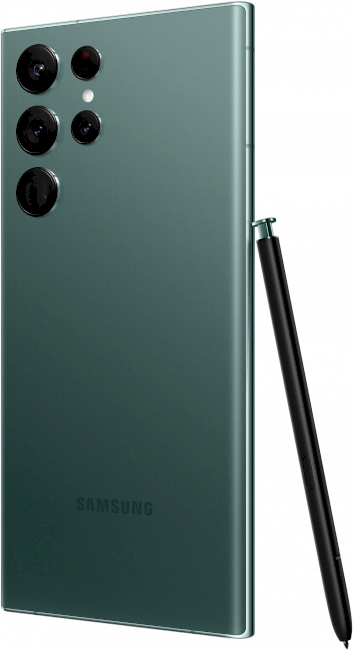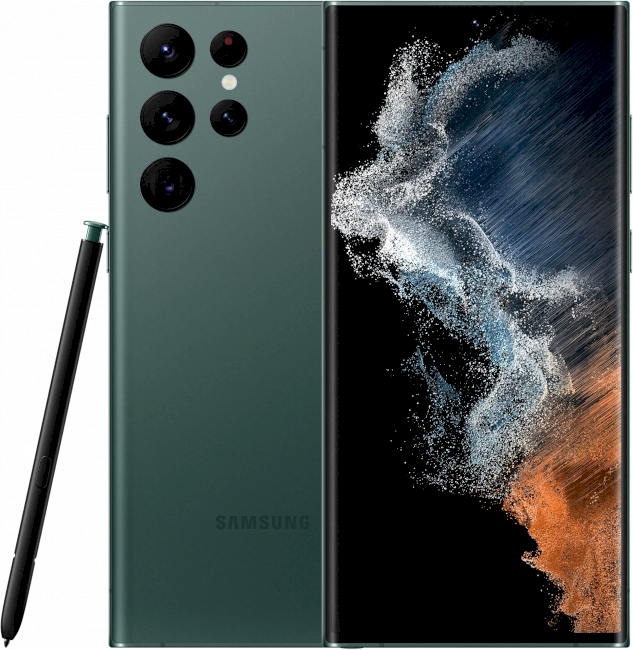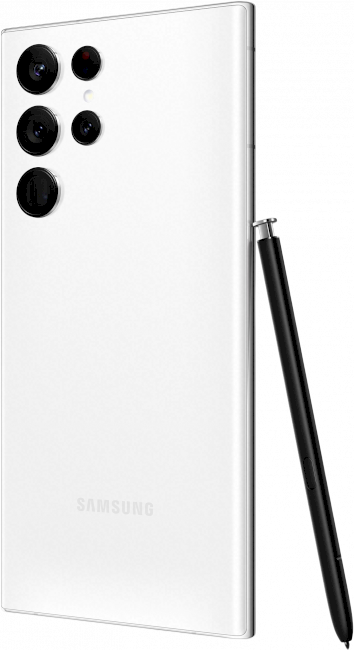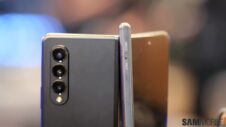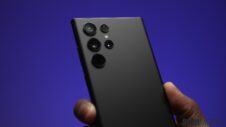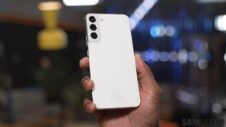The Galaxy S22 series is here, or rather, it will be once the pre-order period ends. And even though the base S22 and the Plus models don't distance themselves from the established formula, the Galaxy S22 Ultra is a different story. It's a Galaxy S flagship in name and camera system, but it's otherwise a Galaxy Note dressed up as a Galaxy S premium device.
On record, Samsung's ambition was to combine the best of both worlds into a single device, i.e., the Galaxy S competent camera with the Galaxy Note's iconic S Pen. But whether or not it achieved this is debatable.
What's evident is that the Galaxy S22 Ultra is, at the very least, a decent Galaxy Note successor. And even though the phone doesn't carry the iconic Note brand, Samsung appears to be well-aware that many Galaxy Note 10+ customers could be looking at this new entry in the S line as a potential upgrade. So, we've decided to take a closer look at how they compare.
Galaxy S22 Ultra vs Galaxy Note 10+: Internal hardware
The Galaxy S22 Ultra is the first Samsung phone to debut with the new 4nm Exynos 2200 chipset. It's powered by AMD graphics — a first in the smartphone industry — namely, the Xclipse 920 graphics chip.
In some markets, at least. In others, the Galaxy S22 Ultra features the Snapdragon 8 Gen 1 SoC, and whether or not Samsung's solution is superior to Qualcomm's is a matter for another time.
For now, we can comfortably say that the Galaxy S22 Ultra is vastly superior to the Galaxy Note 10+ regardless of whether it's the Exynos 9825 or Snapdragon 855 variant.
The latest chipsets were manufactured on a 4nm process instead of 7nm, meaning they have more yet smaller transistors and deliver better performance at a higher energy efficiency.
The Galaxy S22 Ultra has 5G everywhere, but it's also available with less storage and RAM as standard. Samsungs' new flagship has 8GB of RAM and 128GB of built-in memory at the least, while the Galaxy Note 10+ comes with 12GB of RAM and 256GB of storage. And, the new flagship doesn't have a microSD card slot.
On the other hand, Samsung is offering a 1TB Galaxy S22 Ultra model with 12GB of RAM, but it's available exclusively online. The Galaxy Note 10+ tops out at 512GB.
Both phones support 45W super-fast charging, but the Galaxy S22 Ultra comes with a larger 5,000mAh battery instead of 4,300mAh. The newer model also takes advantage of better connectivity features, including Bluetooth 5.2, UWB (Ultra Wideband), and Wi-Fi 6E.
Galaxy S22 Ultra vs Galaxy Note 10+: Display
Samsung's flagship displays rarely — if ever — let down, and needless to say, the Galaxy S22 Ultra's Dynamic AMOLED 2X panel is exceptional. More so than the Galaxy Note 10+ Dynamic AMOLED.
They measure the same, but the Galaxy S22 Ultra is capable of a refresh rate of 1-120Hz. It can go as low as 1Hz when rendering static images to save battery life or as high as 120Hz to deliver smooth UI animations and performance in mobile games.
The Galaxy Note 10+ can't go as low as 1Hz and tops out at 60Hz, so at its best, it can only render half the number of frames of the Galaxy S22 Ultra's panel.
To top it all off, the Galaxy S22 Ultra's display peak at 1,750 nits of brightness, while the Galaxy Note 10+ maxes out at 1,200 nits.
Galaxy S22 Ultra vs Galaxy Note 10+: Cameras
The Galaxy Note 10+ has its beginnings in what we could call the ‘pre-Ultra' era of Galaxy smartphones. And as far as the meaning of ‘Ultra' is concerned, you guessed it. It has to do with cameras.
The first Galaxy ‘Ultra' smartphone — S20 Ultra — was also the first to debut with the ‘Space Zoom' feature and a high-resolution primary sensor.
The Galaxy Note 10+ has what could be called a rudimentary camera system by today's flagship standards. It's based on a 12MP primary camera, a 16MP ultra-wide shooter, and a 12MP telephoto camera with 2x optical zoom.
The 2019 flagship can't hold a candle to the Galaxy S22 Ultra's superior camera combo; it's what it essentially boils down to. The 2022 model uses newer technologies, including a 108MP primary camera, a 12MP ultra-wide camera, a 10MP periscope telephoto shooter with 10x optical zoom, and a 10MP telephoto sensor with 3x optical zoom.
Things aren't much different for the selfie side, where the Galaxy S22 Ultra has a 40MP sensor. The Galaxy Note 10+ makes do with a 10MP selfie camera.
Galaxy S22 Ultra vs Galaxy Note 10+: Build quality and design
The Galaxy Note 10+ stunned the mobile world with its ‘Aura' color range in 2019, especially the mesmerizingly-reflective Aura Glow color option. Trends have changed, and the Galaxy S22 Ultra now has a matte finish that shouldn't attract fingerprint sensors as much.
Both phones have Gorilla Glass display protection and back panels, but where the Galaxy Note 10+ uses Glass 6, the Galaxy S22 Ultra boasts the newer Victus+ solution.
More importantly, the Galaxy S22 series is the first in the Galaxy S line to debut with an Armor Aluminum frame, which should be much more resistant to bending and scratches.
The phones look very similar, except the Galaxy S22 Ultra has a more refined camera housing design. The 2022 model almost looks like an upgraded Note 10+, which isn't a bad thing at all. But, for better or worse, it now carries the S pen on the left side rather than the right.
Galaxy S22 Ultra vs Galaxy Note 10+: S Pen and software experience
The Galaxy S22 Ultra isn't just a Galaxy S21 Ultra with an embedded S Pen. This year, the latency is down from 9ms to 2.8ms thanks to AI prediction improvements and a new Wacom IC (integrated circuit). The latter has 480 rather than 360 cycles per second.
In addition to AI and hardware improvements, the Galaxy S22 Ultra improves Samsung Notes with support for 12 more languages for the handwriting-to-text feature and new additions such as Quick Note in and Collaboration View.
Both phones run Android 12, but the Galaxy Note 10+ is limited to One UI 4.0 as of this writing. The Galaxy Note 10+ could eventually get at least some of the aforementioned software improvements, assuming it receives One UI 4.1.
But if these two phones offer a somewhat similar software experience now, this won't last long. The Galaxy S22 series will receive four major Android OS upgrades, up to Android 16, thanks to Samsung's new firmware policy. On the other hand, Android 12 is the furthest the Galaxy Note 10+ will go.
Galaxy S22 Ultra vs Galaxy Note 10+: The cost of upgrading
As a (base) Galaxy Note 10 owner myself, the Galaxy S22 Ultra looks very tempting. And I can imagine that many Galaxy Note 10+ owners feel the same, even considering the slightly narrower gap between the (2019) Plus and (2022) Ultra models.
Though the lack of expandable storage for the Galaxy S22 Ultra is disappointing, especially since the cheapest variant has 8GB of RAM and 128GB of built-in memory, the 2022 flagship is objectively a superior phone.
Barring the apparent memory downgrade, the Galaxy S22 Ultra is just too good in too many other areas to ignore. And thankfully, if you plan to pre-order the phone, you can pay the price of the 128GB model for the 256GB variant.
So, then, the question is whether or not the Galaxy S22 Ultra is a worthy upgrade from the Galaxy Note 10+. On paper, it sure looks like a step up from the 2019 model. And in practice, Samsung seems to be making it easy for Galaxy Note 10+ 5G owners, in particular, to upgrade to the Galaxy S22 Ultra via trade-in.
Samsung customers in the United States can shave $500 off the Galaxy S22 Ultra price if they trade in the Galaxy Note 10+ 5G. And with a $100 instant rebate, they can pre-order the 256GB model for $800. Don't forget that SamMobile readers can save an additional $50!
Do you plan to upgrade from the Galaxy Note 10+ this year? And do you think the Galaxy S22 Ultra makes a good sequel? Let us know in the comment section and our social media groups.
General Information
-
Model Name
Galaxy S22 Ultra
Galaxy Note 10+
-
Model type
Bar
Bar
-
Colors
Black ()White ()Pink Gold ()Green ()Red ()
Silver (Aura Glow)Black (Aura Black)White (Aura White)Blue (Aura Blue)
-
Announced
2022, February
2019, August
-
Released
2022, February
2019, August
Physical specifications
-
Dimensions
Bar: 163.3 x 77.9 x 8.9 mm
Bar: 162.3 x 77.2 x 7.9 mm
-
Weights
228g
196g
-
IP rating
IP68
IP68
Operating system
-
Operating system
Android 12
Android 11
-
One UI version
4.1
3.0
Networks
-
SIM
Dual SIM model
Dual SIM model (Hybrid SIM slot)
-
SIM card sizes
Nano-SIM (4FF)
Nano-SIM (4FF)Nano-SIM (4FF)
-
Networks
2G3G4G5G
2G3G4G
-
eSIM support
Yes
No
Display
-
Kind
Main Display
-
Name
Infinity-O Display
Infinity-O Display
-
Technology
Dynamic AMOLED 2X
Dynamic AMOLED Display
-
Size
6.8 inch / 172.72 mm
6.8 inch / 172.72 mm
-
Resolution
WQHD+ / 3088x1440 pixels
QHD+ / 3040x1440 pixels
-
Pixel density
501 PPI
498 PPI
-
Screen to body ratio
~91%
-
Refresh rate
120Hz
Join SamMobile’s Telegram group and subscribe to our YouTube channel to get instant news updates and in-depth reviews of Samsung devices. You can also subscribe to get updates from us on Google News and follow us on Twitter.
